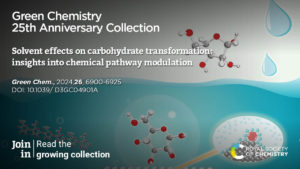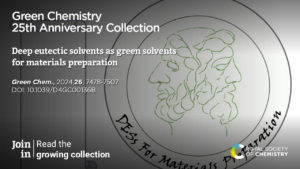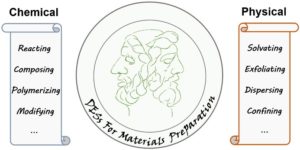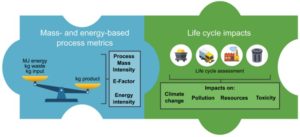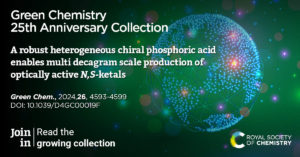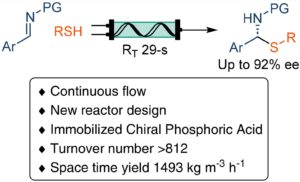Over the past 25 years, Green Chemistry has provided a unique forum for the publication of innovative research on the development of alternative sustainable technologies, efficient utilisation of resources and the concomitant minimisation of waste. We are delighted to bring together a very special issue containing articles by members of the green chemistry community as well as past and present Green Chemistry Board members, to mark and celebrate our first 25 years.
 |
Among the contributions to this themed collection is a Critical Review that summarizes the primary types of carbohydrate chemical transformation and commonly used solvent systems, providing an overview of solvent effects in these reactions and an insight into solvent effects from a microscopic perspective (DOI: 10.1039/D3GC04901A)
The review also provides relevant insights into the current status and challenges of solvent engineering, contributing to the solvent construction of carbohydrate reaction systems. |
Read our interview with Haipeng Yu, the corresponding author here:
How would you set this article in a wider context?
The development of biomass resources is progressively moving towards refinement for higher-value benefits. Carbohydrates are an important component of biomass resources, and the chemicals obtained from their chemical derivatization are key intermediates in the production of biofuels, bioplastics, pharmaceuticals and fine chemicals, which makes carbohydrate resources a favourable alternative to traditional fossil energy sources. This article provides relevant insights into how solvent effects modulate carbohydrate reactions and also offers key information to optimize the reactions and improve their sustainability and environmental friendliness. The modulation of chemical pathways by solvents is a pervasive application. This article not only advances the understanding of biomass-derived chemical production, but also contributes to broader fields such as organic synthesis, materials science, industrial process design and green chemistry. It is hoped that this article will resonate across disciplines and provide a reference for more sustainable, efficient and targeted chemical processes.
What is the motivation behind this work?
We hope that this work will inspire future rationalized solvent design for specific chemical reactions. By understanding the mechanisms by which solvents regulate carbohydrate conversion pathways, researchers can develop novel and practical solvent systems that will improve the reaction efficiency and sustainability of a range of chemical processes.
What aspects of this work are you most excited about at the moment and what do you find most challenging about it?
The most interesting and challenging part of this work is the exploration and demonstration of the interaction between the solvent and other substances in the reaction system. The influence of solvent regulation on experimental results can be jointly supported through experimental control and microscopic simulation.
What is the next step? What work is planned?
In the next step, we plan to utilize solvent effects to develop related fine chemicals based on the sugar platform.
Please describe your journey to becoming part of the Green Chemistry community.
My journey began in my graduate studies when I recognized the environmental impact of traditional chemical processes, and I was inspired by sustainable chemistry to delve deeper into biomass conversion. I have been working on projects with my teachers and fellow students on green catalysts, synthetic routes, and bio-based materials. In the process I have come to understand the Green Chemistry community and become a part of it. In the future, I will take green chemistry as my purpose and continue to focus on the development of sustainable biomass conversion and utilization.
Why did you choose to publish in Green Chemistry?
I chose to publish in Green Chemistry because it aligns with the commitment to advancing sustainable and environmentally friendly chemical processes. The journal is a leading platform for cutting-edge research that promotes the principles of green chemistry. By publishing in Green Chemistry, I have the opportunity to contribute to a global community of scientists who are focused on developing innovative, sustainable solutions that address environmental challenges.
What do you think the Green Chemistry journal has done well in the past 25 years, and what do you think are the main challenges our community will face in the next 25 years?
Over the past 25 years, Green Chemistry has played a pivotal role in advancing sustainable science by providing a respected platform for researchers to share groundbreaking work on environmentally friendly chemical processes. The journal has successfully promoted the 12 Principles of Green Chemistry, helping shift industry and academic focus toward designing safer chemicals, using renewable resources, and minimizing waste. It has also facilitated collaboration between chemists, engineers, and policy-makers, driving practical applications of green technologies in industries like pharmaceuticals, energy, and materials science.
However, as we look ahead to the next 25 years, scaling sustainable technologies for widespread industrial adoption remains a major hurdle, as many green alternatives still struggle to compete economically with conventional processes. The journal may need to focus more on scaling up the practicality and economics of green chemistry processes. Additionally, as global environmental policies and regulations evolve, the journal may need to adjust its focus and content to remain relevant and impactful, including a greater emphasis on topics such as chemical recycling, renewable resource, and carbon footprint reduction.


